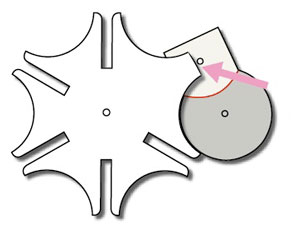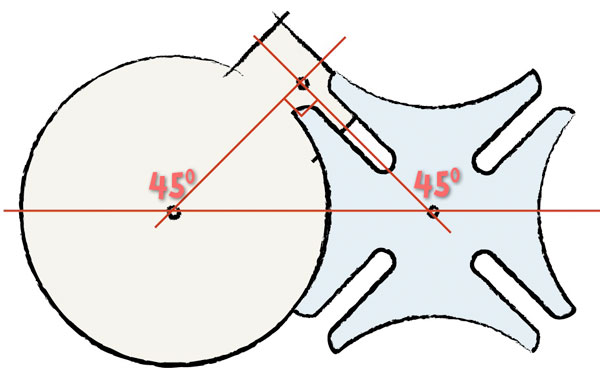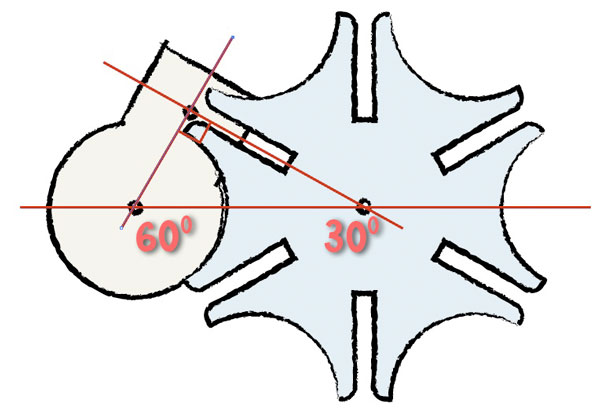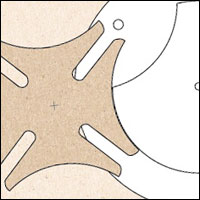The Geneva drive is named after the city of its invention where it was used in the construction of clocks.
 Originally the Geneva mechanism was used as a way of preventing springs from being wound too tight. One of the slots would be blanked off so the winder could only be turned a fixed number of turns. This mechanism is known as a Geneva stop or Geneva stop works.
Originally the Geneva mechanism was used as a way of preventing springs from being wound too tight. One of the slots would be blanked off so the winder could only be turned a fixed number of turns. This mechanism is known as a Geneva stop or Geneva stop works.
In this case the spring would be connected to the smaller wheel, the slotted wheel is there to limit the number of turns. After five turns, the pin hits the blanked out slot, arrowed, and the spring is prevented from being over wound.
The Geneva drive is used to provide intermittent motion, the drive wheel turns continuously, the pin on the drive wheel then turns the cross shaped piece quarter of a turn for each revolution of the drive wheel.
The crescent shaped cut out in the drive wheel lets the points of the cross pass, the rest of the circle locks the slotted wheel into place while it is stationary. Drive motion can be changed by changing the number of slots in the slotted wheel.
The Geneva drive mechanism is used commonly in film projectors to move the film on one frame at a time then hold it stationary as the bright projector light is shone through it.
No iFrame ‘;
print ‘
Using HTML 5 ‘;
}
else{
print’
‘;
print ‘
Using Flash’;
}
?>
The Geometry of the Geneva Mechanism
 In the four slot Geneva stop, both wheels are the same size.
In the four slot Geneva stop, both wheels are the same size.
In Geneva drives with different numbers of slots a little geometry soon reveals the relative sizes of the wheel.
 For example, in the six-slot design, left, the slots are sixty degrees apart. The drive pin needs to to enter the top of the slot at an angle of ninety degrees. With the angles fixed, working out the dimensions is straight forward. In the six slot example, construct a right angled triangle with one the the angles being sixty degrees. The radii (radiuses?) of the two wheels are the lengths to the two shortest sides of the triangle and the wheels are separated by the length of the longest side. Ta daa!
For example, in the six-slot design, left, the slots are sixty degrees apart. The drive pin needs to to enter the top of the slot at an angle of ninety degrees. With the angles fixed, working out the dimensions is straight forward. In the six slot example, construct a right angled triangle with one the the angles being sixty degrees. The radii (radiuses?) of the two wheels are the lengths to the two shortest sides of the triangle and the wheels are separated by the length of the longest side. Ta daa!
Make your own working Geneva drive here and here
See a Geneva drive in action here


